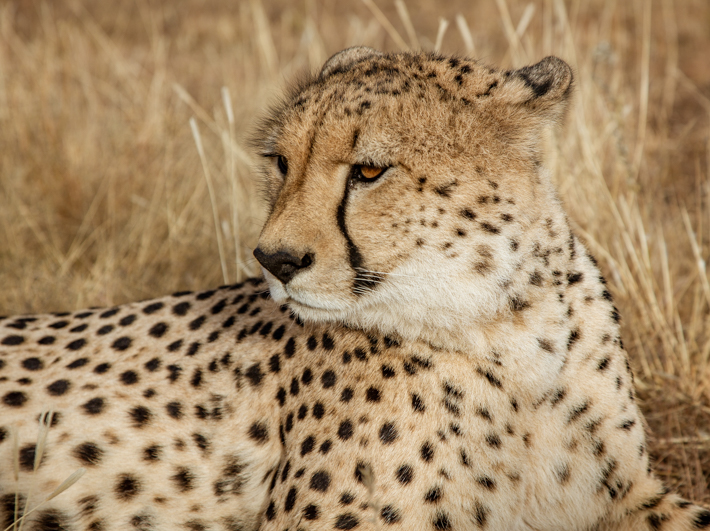
We enjoyed our past trips to Africa, but have not been on that continent for 25 years. We have been on safaris to Tanzania, Zimbabwe and South Africa, each on separate trips. It was time to visit this continent again. We have just finished a few days in Windhoek, the capital of Namibia and will be spending the next two weeks in Namibia, starting with a photographic safari we are joining tonight. Following that will be a couple weeks in Botswana, and then finishing with a few days in Johannesburg, South Africa.
This has been a LONG flight. We arrived in Johannesburg, our first stop in Africa, more than 30 hours after boarding our first flight in Cuenca. It was -2 degrees C (28 degrees F), as they were having a cold snap. We stayed just one night there, in a very nice boutique lodge, Outlook Lodge Lakefield in Benoni, just outside the airport, to give us a real bed and a bit of time to overcome our jet lag before continuing on to Windhoek, Namibia the following day.
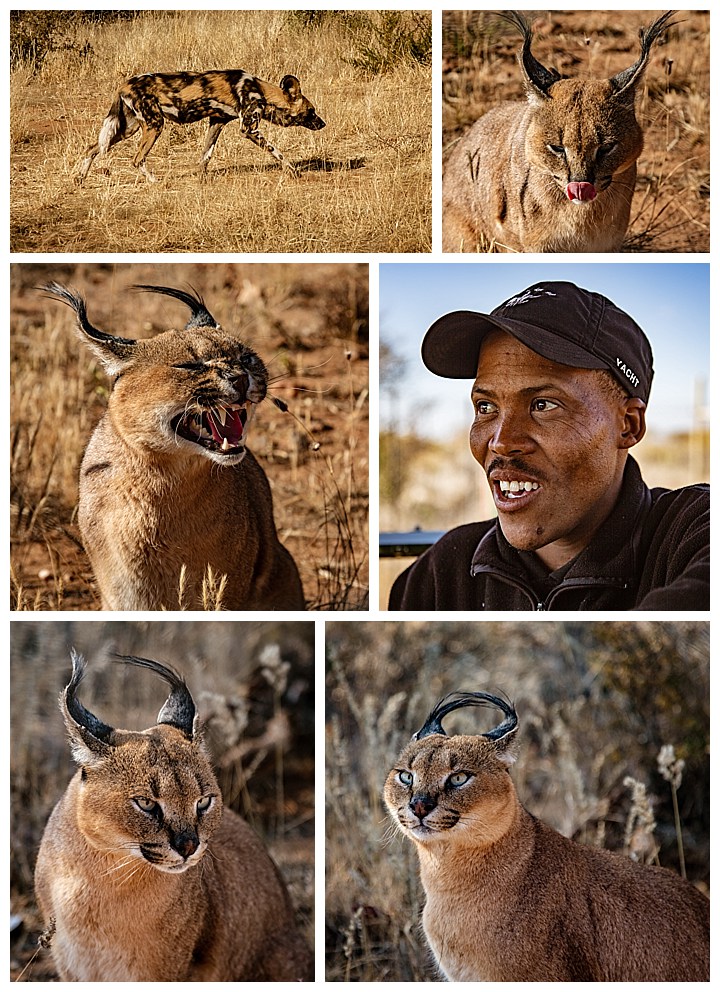
On our first full day in Windhoek, we found a “Carnivore Feeding” tour at N/a’an ku sê Lodge that lasted 3 hours, and decided to join it, for our first introduction to Namibia wildlife. N/a’an ku sê is an animal rescue wildlife sanctuary, run by a non-profit organization. Our local guide for this tour, Saloman (middle-right) was excellent with animals, calling them for feeding time and allowing us to photograph each type, as they devoured steaks and chickens. He then followed with a brief but informative talk about each animal’s history (the name, age, and the species of each animal being fed).
The reserve is on 8,000 hectares (20,000 acres), which is huge. Each enclosed animal pen is thousands of acres in size, giving the animals a large area to roam. As we drove around the grounds, we noted how well maintained the wire fences were, as well as the small electric fences on both inside (to train the animals from approaching the main fence) and outside (to discourage burrowing animals from entering the pens). Every animal we saw was extremely healthy too.
Our first thoughts were how much nicer this looks than the equivalent (but MUCH smaller) facilities we have seen in Ecuador. Our second thought was… hmmm, doesn’t this remind you of Jurassic Park…?! (we instinctively started looking around for a loose dinosaur… ☺)
We started with a pack of wild dogs which are known to be vicious as they literally tear apart their prey. We saw the same animals when encountering them in the wild in Tanzania in 1991, though these were more healthy and well groomed. Next, we were introduced to a pair of Caracal, a feline that looks very similar to a lynx. The ears were fascinating to watch, as they moved almost constantly into different shapes, enabling the animal to locate the direction of prey.
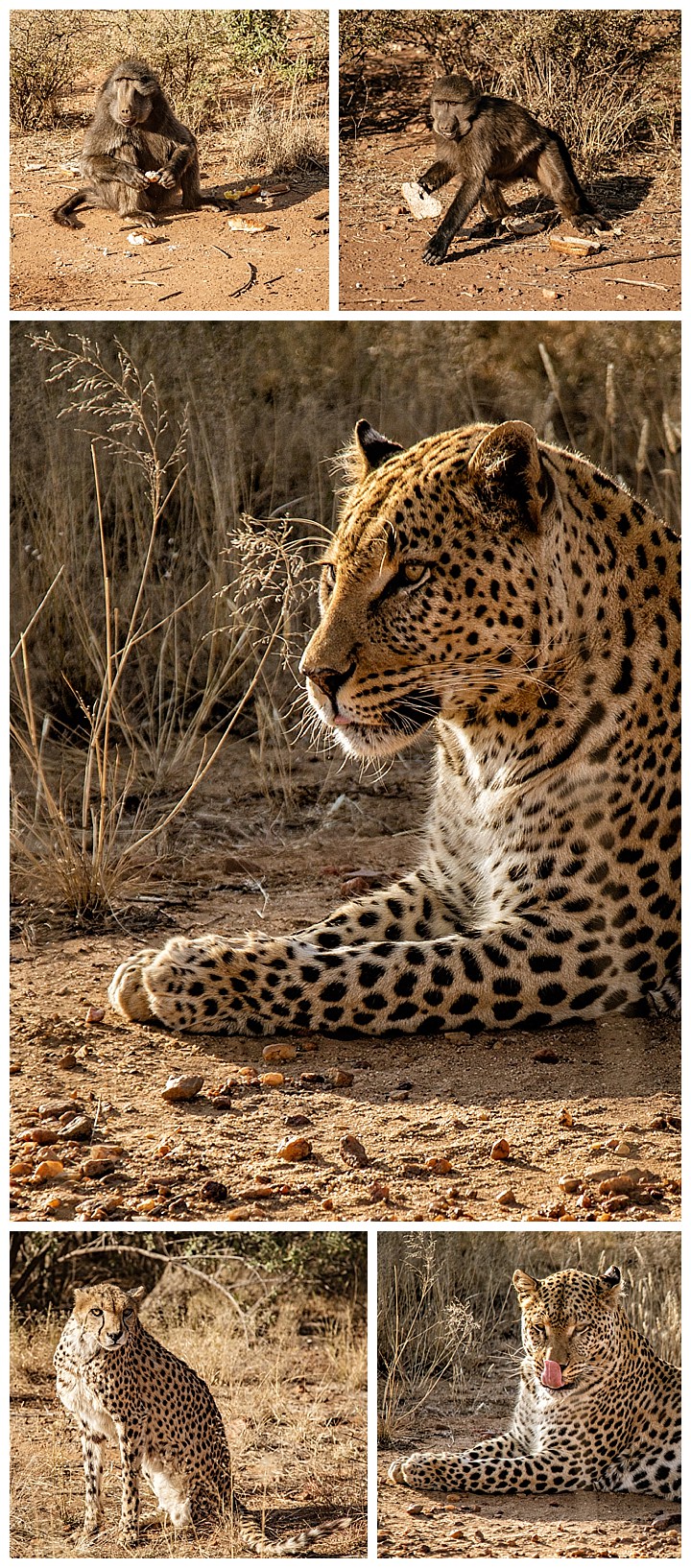
Our third group included a pack of baboons (upper row). Namibian law makes it illegal for game sanctuaries to breed animals, to prevent them from allowing hunters to come and kill the animals for profit. Therefore, N/a’an ku sê provides means of birth control for each species. Initially, the baboon males were castrated for this reason. However, the local wild baboons sensed the females in heat, worked their way past the electric fences and impregnated the protected females. The result was a wave of unexpected births. Once the staff realized how crafty the wild baboons were, they implanted all females with a birth control chip.
Pen #4 was occupied by leopards. These leopards were a lot closer than ones we saw decades ago in the wild (the images above were taken when the leopards were no more than 5 or 6 feet from our cameras). We have never been able to get this close to such animals when they were in what appeared to be natural surroundings (unlike the zoo enclosures they are often seen in). All the animals were named, the 3-legged leopard is called “Lucky”, after surviving being caught in a leg trap and having the leg amputated. The older leopard is simply “Old Lady,” because when she came to the park, she was already considered very old for a wild leopard. That was 19 years ago, so Old Lady is now elderly indeed.
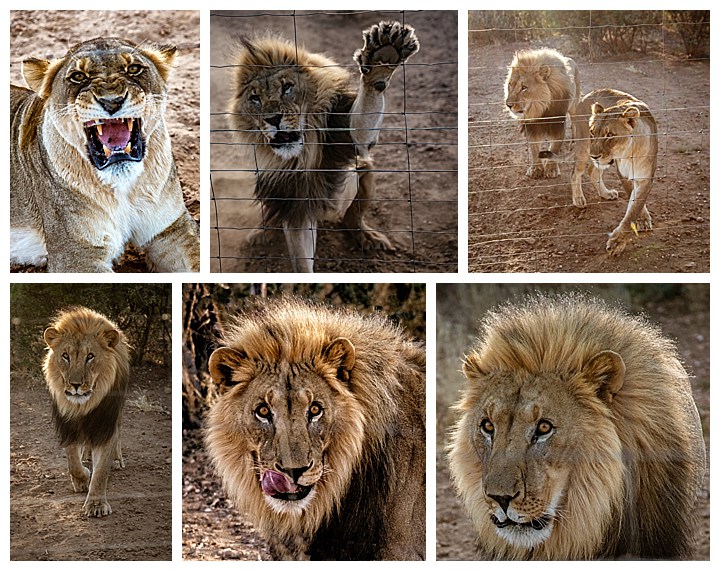
Out last stop was at the lion enclosure. Unlike the other animals, we were not allowed to leave the jeep this time. The male lion was brought here a couple years ago when it was captured by a farmer, after it had killed several of the farmer’s sheep. Unfortunately, once a predator gets a taste for sheep, they must either be killed or removed from the presence of such easy prey. Thus, this male was brought to the sanctuary. It is the only predator we saw that did not appear content with his surroundings, and lunged at the fence several times (top-center). Visitors are now kept in the vehicle, at a greater distance, with the hope that the lion will eventually become accustomed to humans and become less aggressive.
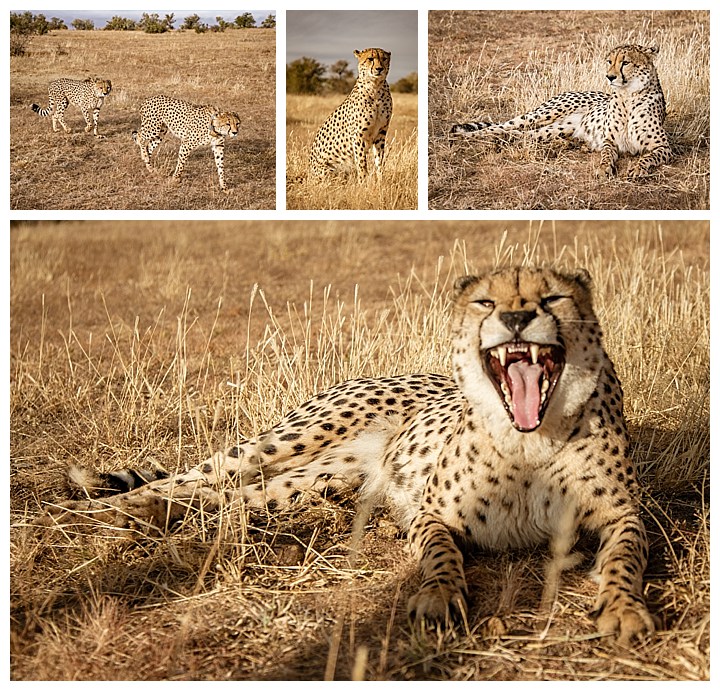
Our second day with a return to N/a’an ku sê Lodge, for their “cheetah walk.” If a cheetah is bottle fed as a baby, and then raised with humans, he will be as tame as a house cat. Though illegal, some people still do this, and then call for help when the animal has grown too large for them to keep any longer. By that time, the cheetahs cannot be released into the wild, because they never learned to hunt or to protect themselves from other predators. We walked for about an hour with two such cheetahs that the sanctuary rescued, often within a couple feet of us. This was an experience we had not originally expected to find, and it was enjoyable walking with them… when they decided to move. Just like house cats, they spent a large part of that hour lying down and ignoring the humans around them…
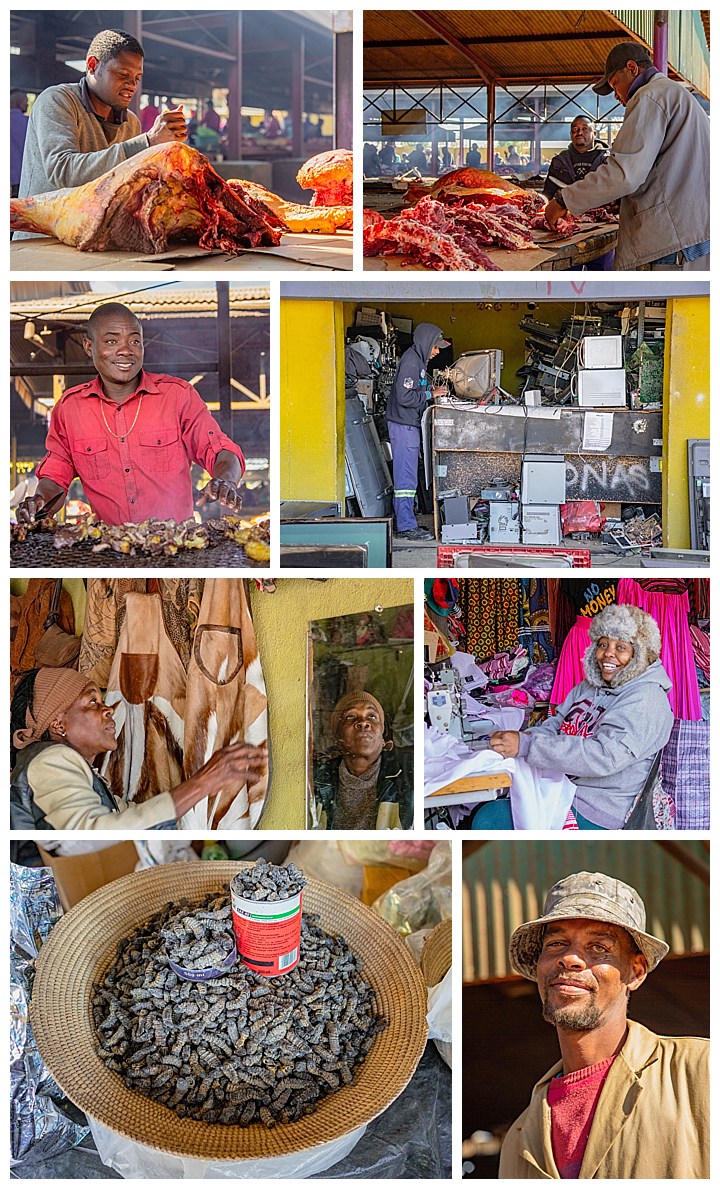
We finished yesterday by having our driver take us to a couple of local markets. First was the Single Quarter meat market in Katatura, where we had been told we should try the local Namibian beef, Kapana. We bought some from the vendor above (second row – left), and it was indeed tender and very tasty. Definitely gave us an incentive to try more beef in this country.
We also visited the vegetable and fruit open markets, which sell fresh vegetables and fruits, as well as supplying many services. One interesting food that we found in multiple locations was grubs (lower-left), which is a favorite snack food. There was also a TV repairman (second row – right), several seamstresses (third row), as well as hair dressers and other services.
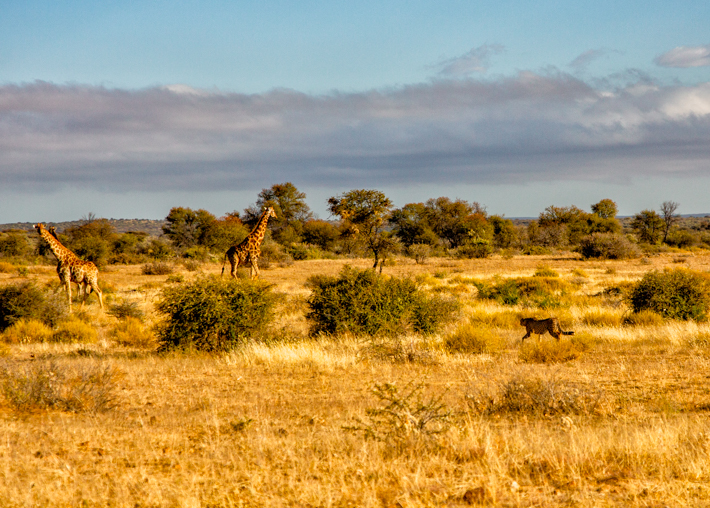
All the while we were walking with the cheetahs, there was a large tower of giraffes nearby. As the scheduled end of the walk approached, one of the cheetahs sped off towards them, as seen above (cheetah is center-right in the photo). The giraffes responded by scattering in all directions, making the predator choose only one to pursue. Given the speed of the giraffes and the head start they had, it was pretty clear that the cheetah would have to return home to be fed once again.
Closing with a short 33 sec video showing how the meat is cut and processed in this local market.
